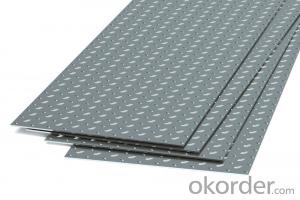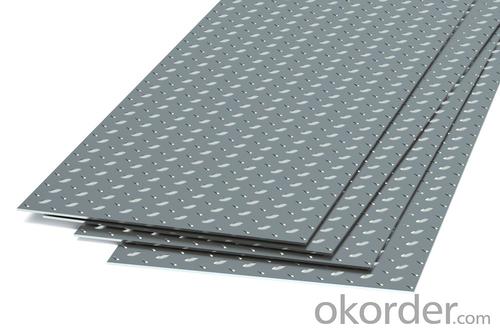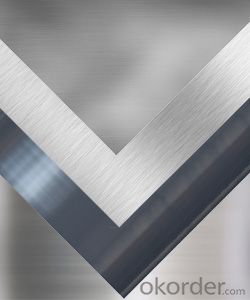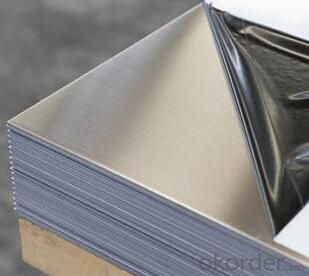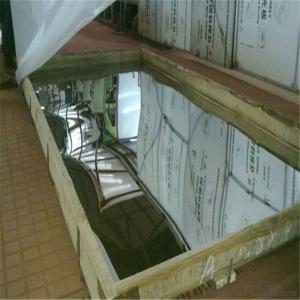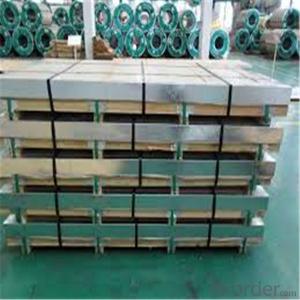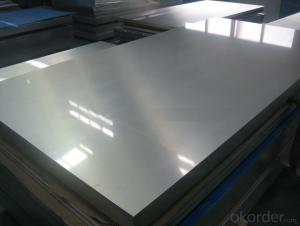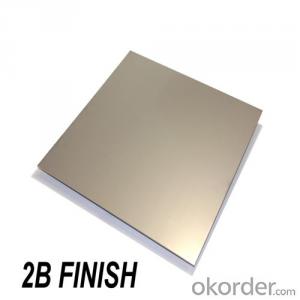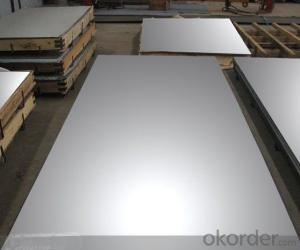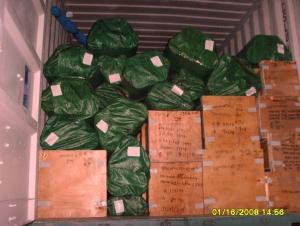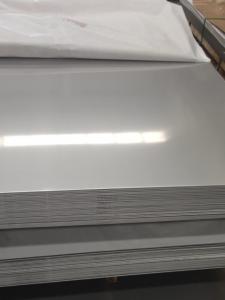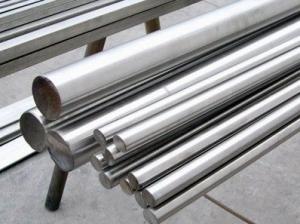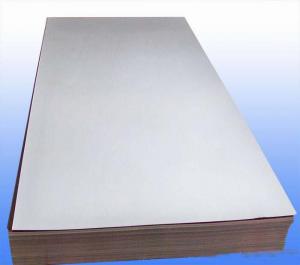201 304 430 Stainless Steel Sheet / Stainless Steel 2B No.1 Sheet
- Loading Port:
- Shanghai
- Payment Terms:
- TT OR LC
- Min Order Qty:
- 1 m.t.
- Supply Capability:
- 20000 m.t./month
OKorder Service Pledge
OKorder Financial Service
You Might Also Like
Specification
201 304 430 Stainless Steel Sheet / Stainless Steel 2B No.1 Sheet
Packaging Details:Wooden pallets,water proof paper-20'GP or 40'GP for stainless steel sheet.
Delivery Detail:within 5-7 days after receiving the deposit
1. Specifications about stainless steel sheet
Commodity | Professional 430 201 202 304 304l 316 316l 321 310s 309s 904l stainless steel sheet |
Grade | 201,202,304,304L,316,316L,310S,309S,321,301,310,410,420,430,904L |
Brand | TISCO ,BAOSTEEL,POSCO,JISCO,LISCO |
Certification | SGS,BV,IQI,TUV,ISO,etc |
Thickness | 0.2mm-150mm |
Width | 1000,1219,1250,1500mm, or as your requirements |
Length | 2000,2438,2500,3000,6000mm, or as your requirements |
Surface | No.1, 2B, BA, 8K Mirror, Hairline,satin, Embossed,brush,No.4,HL,matt,pvc film,laser film. |
Standard | ASTM,AISI,SUS,JIS,EN,DIN,GB, ASME,etc |
Delivery time | 5-7 days after confirming the order |
MOQ | 1 Ton |
Advantages | Showing the splendor of your quality, wearresistant as well , strong corrosion resistance and decorative effect, durable and beautiful in good taste. |
2.Production Flow about stainless steel sheet
Raw materials are sending to hot rolling units for rolling into different sizes
Hot rolled material is annealing in cold; rolled annealing furnace and pickling in acid.
All mill rolls are grinded on precision grinding machine with proper chamfering after first shiftoperation.
All sheets are pickled in different tanks and dried on brush roll machine before dispatched.
These sheets are again annealing and are sent to straighten machine for straightening.
Inspections are done at various stages. Keep proper control overall internal process via rolling,annealin and pickling by our experienced staff.
3.Surface--stainless steel sheet
| Surface Finish | Definition | Application |
| 2B | Those finished, after cold rolling, by heat treatment, pickling or other equivalent treatment and lastly by cold rolling to given appropriate luster. | Medical equipment, Food industry, Construction material, Kitchen utensils. |
BA/8K mirror | Those processed with bright heat treatment after cold rolling. | Kitchen utensils, Electric equipment, Building construction. |
| NO.3 | Those finished by polishing with No.100 to No.120 abrasives specified in JIS R6001. | Kitchen utensils, Building construction. |
| NO.4 | Those finished by polishing with No.150 to No.180 abrasives specified in JIS R6001. | Kitchen utensils, Building construction, Medical equipment. |
| Hairline | Those finished polishing so as to give continuous polishing streaks by using abrasive of suitable grain size. | Building Construction. |
| NO.1 | The surface finished by heat treatment and pickling or processes corresponding there to after hot rolling. | Chemical tank, pipe. |
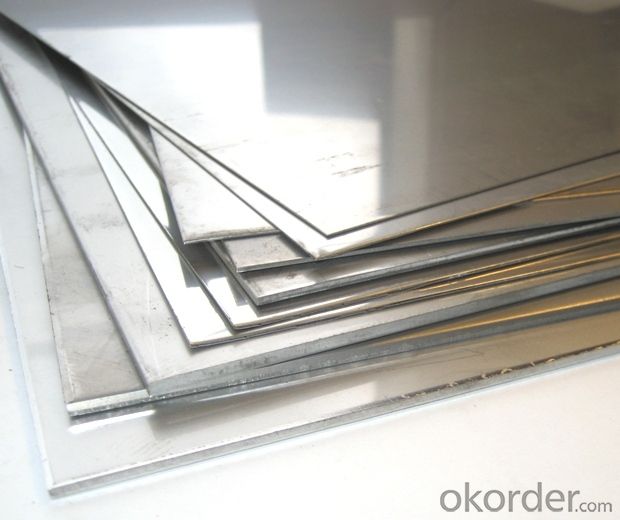
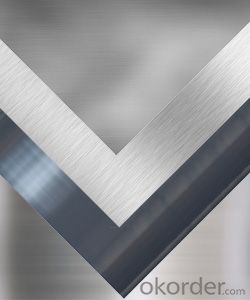
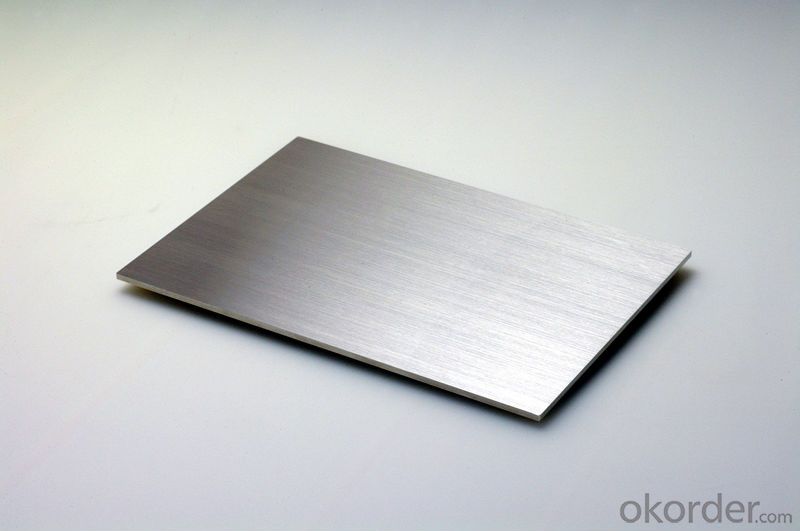
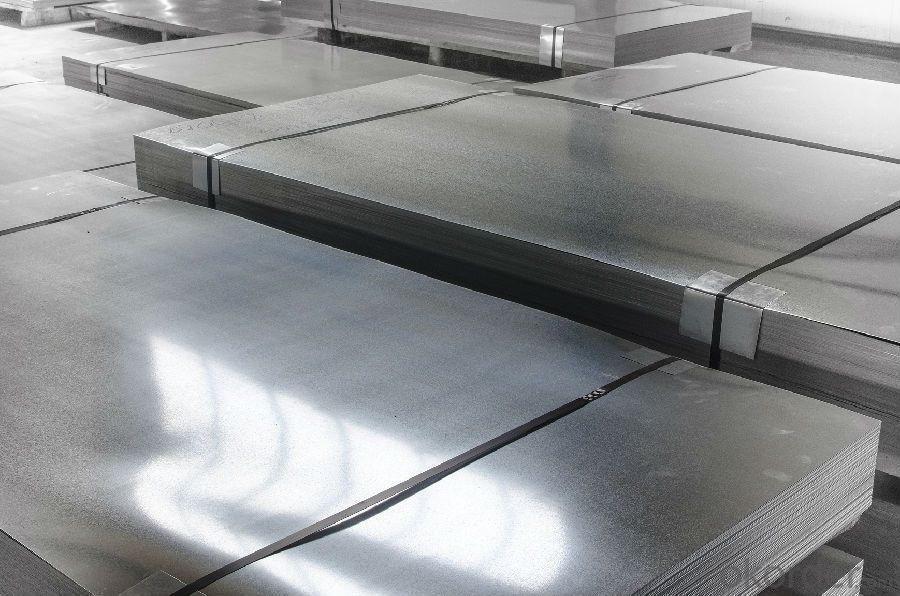
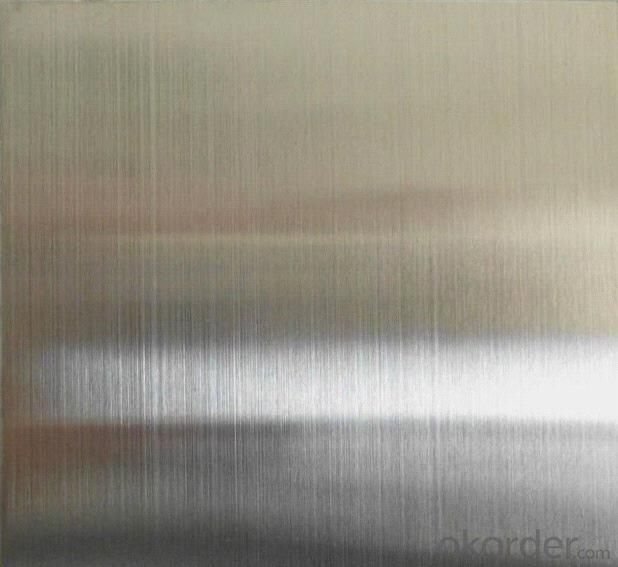
- Q: Can stainless steel sheets be bent or formed into different shapes?
- Yes, stainless steel sheets can be bent or formed into different shapes. Stainless steel is a highly versatile material that can be manipulated through various processes such as bending, rolling, and forming to create a wide range of shapes and structures. The ability to bend stainless steel sheets makes it suitable for applications in industries such as architecture, automotive, and manufacturing. Additionally, stainless steel's corrosion resistance properties are not compromised during the bending process, making it a durable and long-lasting material choice for various purposes.
- Q: Can stainless steel sheets be recycled?
- Yes, stainless steel sheets can be recycled. Stainless steel is a highly recyclable material, and it can be melted down and reused to produce new stainless steel products. Recycling stainless steel not only conserves natural resources but also helps to reduce waste and minimize environmental impact.
- Q: Can stainless steel sheets be used for roofing?
- Indeed, roofing can utilize stainless steel sheets as they possess qualities such as durability, longevity, and resistance against corrosion, rust, and weathering. As a result, stainless steel serves as an exceptional choice for various roofing applications, including industrial, commercial, and residential projects. These sheets offer remarkable strength and the ability to endure adverse weather conditions, including heavy rain, snow, and wind. Furthermore, stainless steel exhibits fire resistance and remains free from warping or cracking, thereby ensuring a dependable and secure roofing solution. However, it is crucial to acknowledge that stainless steel roofing materials can be pricier than alternative options, necessitating the consideration of cost factors.
- Q: Can stainless steel sheets be used for escalator cladding?
- Yes, stainless steel sheets can be used for escalator cladding. Stainless steel is a durable and corrosion-resistant material that can withstand the daily wear and tear of escalator usage. It provides a sleek and modern appearance while also offering protection and easy maintenance.
- Q: What are the different sheet sizes available for stainless steel?
- Various sizes of stainless steel sheets are available to meet different needs and industry standards. The commonly used sheet sizes for stainless steel are 4 feet by 8 feet (48 inches by 96 inches) and 4 feet by 10 feet (48 inches by 120 inches). These sizes find extensive use in construction, manufacturing, and fabrication industries. However, stainless steel sheets can also be obtained in other sizes, depending on the specific requirements of a project. Some suppliers offer custom cutting services, enabling customers to order sheets in non-standard dimensions. This adaptability in size options guarantees that stainless steel sheets can be customized to fit various applications, ranging from small-scale projects to large industrial installations. Additionally, the thickness of stainless steel sheets can vary significantly. Standard thicknesses typically range from 0.4 millimeters to 12 millimeters, although thicker or thinner sheets can be produced upon request. The selection of different thicknesses is based on the desired strength and durability for a specific application. Ultimately, the availability of diverse sheet sizes for stainless steel ensures that customers have the freedom to select the most appropriate dimensions for their project's unique requirements.
- Q: How do I prevent corrosion under insulation on stainless steel sheets?
- To prevent corrosion under insulation on stainless steel sheets, it is essential to ensure proper installation and maintenance. Firstly, use high-quality insulation materials that are resistant to moisture and have a vapor barrier to prevent any water penetration. Secondly, ensure that the stainless steel sheets are installed correctly, with no gaps or exposed areas that could allow moisture accumulation. Regular inspections and maintenance, including repairing damaged insulation or sealing any gaps, are crucial to prevent moisture ingress. Additionally, applying a suitable corrosion inhibitor on the stainless steel surface can provide an extra layer of protection.
- Q: Can stainless steel sheets be used in food processing?
- Yes, stainless steel sheets can be used in food processing. Stainless steel is a common material used in the food industry due to its many beneficial properties. It is highly resistant to corrosion, which is crucial in food processing environments where frequent contact with water, chemicals, and food is expected. Stainless steel sheets are also non-reactive, meaning they do not interact with food or affect its taste, making it a safe choice for food processing equipment. Additionally, stainless steel is easy to clean and maintain, making it suitable for maintaining high levels of hygiene required in food processing facilities. Its durability and strength also ensure that it can withstand the rigorous demands of food processing operations. Overall, stainless steel sheets are a preferred material in the food industry due to their suitability for food processing applications.
- Q: What is the difference between hot rolled and cold rolled stainless steel sheets?
- Hot rolled and cold rolled stainless steel sheets differ in their manufacturing process, resulting in distinctive characteristics and properties. Hot rolled stainless steel sheets are manufactured by passing the stainless steel through a series of rollers at a high temperature. This process results in a thicker and rougher surface compared to cold rolled sheets. Hot rolling allows for faster production and is generally more cost-effective. However, the rougher surface may require additional processing, such as grinding or polishing, to achieve the desired finish. On the other hand, cold rolled stainless steel sheets are manufactured by cooling the hot rolled sheets and then annealing them in a controlled environment. This process improves the surface finish, resulting in a smoother and more uniform appearance. Cold rolling also allows for tighter tolerances and greater strength, making it suitable for applications that require precise dimensions and superior mechanical properties. In terms of strength and hardness, cold rolled stainless steel sheets generally exhibit greater strength and hardness compared to hot rolled sheets. This is due to the strain hardening that occurs during the cold rolling process. Cold rolled sheets are also less susceptible to deformation and warping, making them ideal for applications where flatness is critical. In summary, the main differences between hot rolled and cold rolled stainless steel sheets lie in their manufacturing process, surface finish, dimensional tolerance, and mechanical properties. Hot rolled sheets are thicker and have a rougher surface, while cold rolled sheets are thinner, smoother, and exhibit greater strength and hardness. The choice between the two depends on the specific requirements of the application and the desired aesthetic and functional characteristics.
- Q: What are the different types of stainless steel sheets available?
- There are several different types of stainless steel sheets available in the market, each with its own unique properties and applications. Some of the most common types include: 1. Austenitic Stainless Steel Sheets: This type of stainless steel is the most widely used and offers excellent corrosion resistance, high strength, and good formability. It is commonly used in kitchen equipment, food processing plants, and pharmaceutical industries. 2. Ferritic Stainless Steel Sheets: Ferritic stainless steel sheets have a higher chromium content and lower carbon content compared to austenitic stainless steel. They are known for their excellent resistance to stress corrosion cracking and are often used in automotive applications, architectural structures, and appliances. 3. Martensitic Stainless Steel Sheets: Martensitic stainless steel sheets have a higher carbon content compared to other types, which gives them high strength and hardness. They are commonly used in applications requiring wear resistance, such as cutlery, surgical instruments, and turbine blades. 4. Duplex Stainless Steel Sheets: Duplex stainless steel sheets have a mixed microstructure of austenite and ferrite, which provides them with a combination of high strength and excellent corrosion resistance. They are often used in chemical processing plants, oil and gas industries, and marine environments. 5. Precipitation Hardening Stainless Steel Sheets: Precipitation hardening stainless steel sheets are heat-treatable and offer high strength and corrosion resistance. They are commonly used in aerospace applications, defense equipment, and high-performance industries. It's important to consider the specific requirements of your project or application when choosing the type of stainless steel sheet, as each type has its own set of properties and advantages.
- Q: Are stainless steel sheets suitable for architectural mesh applications?
- Architectural mesh applications greatly benefit from the use of stainless steel sheets. This material is incredibly versatile and durable, offering a multitude of advantages for architectural purposes. With its resistance to corrosion, stainless steel is indispensable for long-lasting performance in outdoor and high-moisture environments. Moreover, its exceptional strength enables it to withstand heavy loads, making it an ideal choice for structural applications. The utilization of stainless steel sheets in architectural mesh brings together functionality and aesthetics in a unique manner. This mesh can be employed in various ways, such as facades, cladding, sunshades, balustrades, and partitions. It can be woven or welded into diverse patterns and shapes, allowing for imaginative and visually appealing designs. Furthermore, stainless steel architectural mesh provides excellent transparency and airflow, making it suitable for applications requiring ventilation or light transmission. It enhances the visual appeal of a building by creating a sense of openness, while simultaneously ensuring privacy and security. Additionally, stainless steel offers a high level of customization. It can be finished in different colors and surface textures, providing architects and designers with the opportunity to achieve their desired aesthetic. Additionally, stainless steel is a sustainable material, as it is fully recyclable and has a long lifespan, minimizing the environmental impact of architectural projects. In summary, stainless steel sheets are an excellent choice for architectural mesh applications due to their corrosion resistance, strength, versatility, and aesthetic appeal. They grant architects and designers a wide range of possibilities to create visually striking and functional structures.
Send your message to us
201 304 430 Stainless Steel Sheet / Stainless Steel 2B No.1 Sheet
- Loading Port:
- Shanghai
- Payment Terms:
- TT OR LC
- Min Order Qty:
- 1 m.t.
- Supply Capability:
- 20000 m.t./month
OKorder Service Pledge
OKorder Financial Service
Similar products
Hot products
Hot Searches
Related keywords
